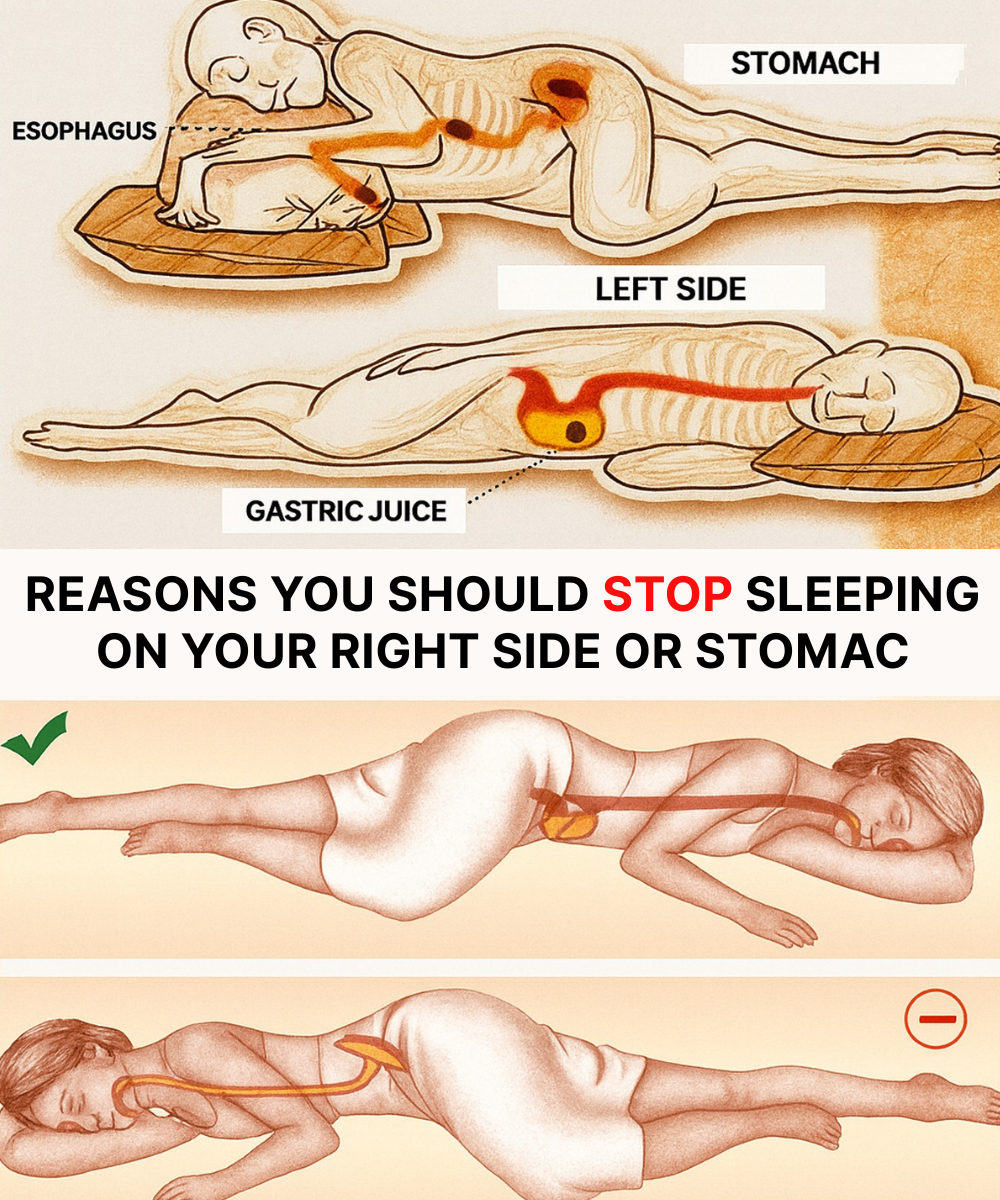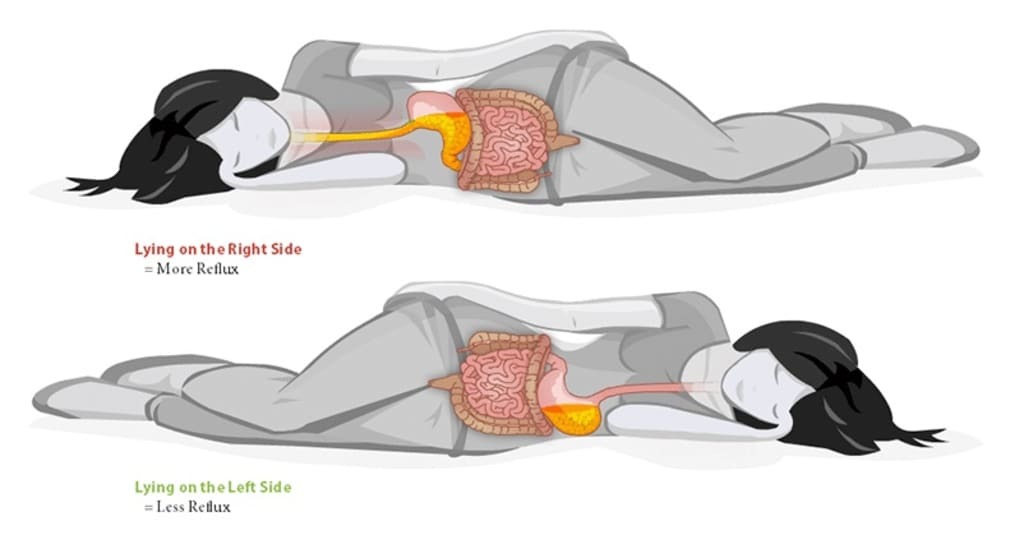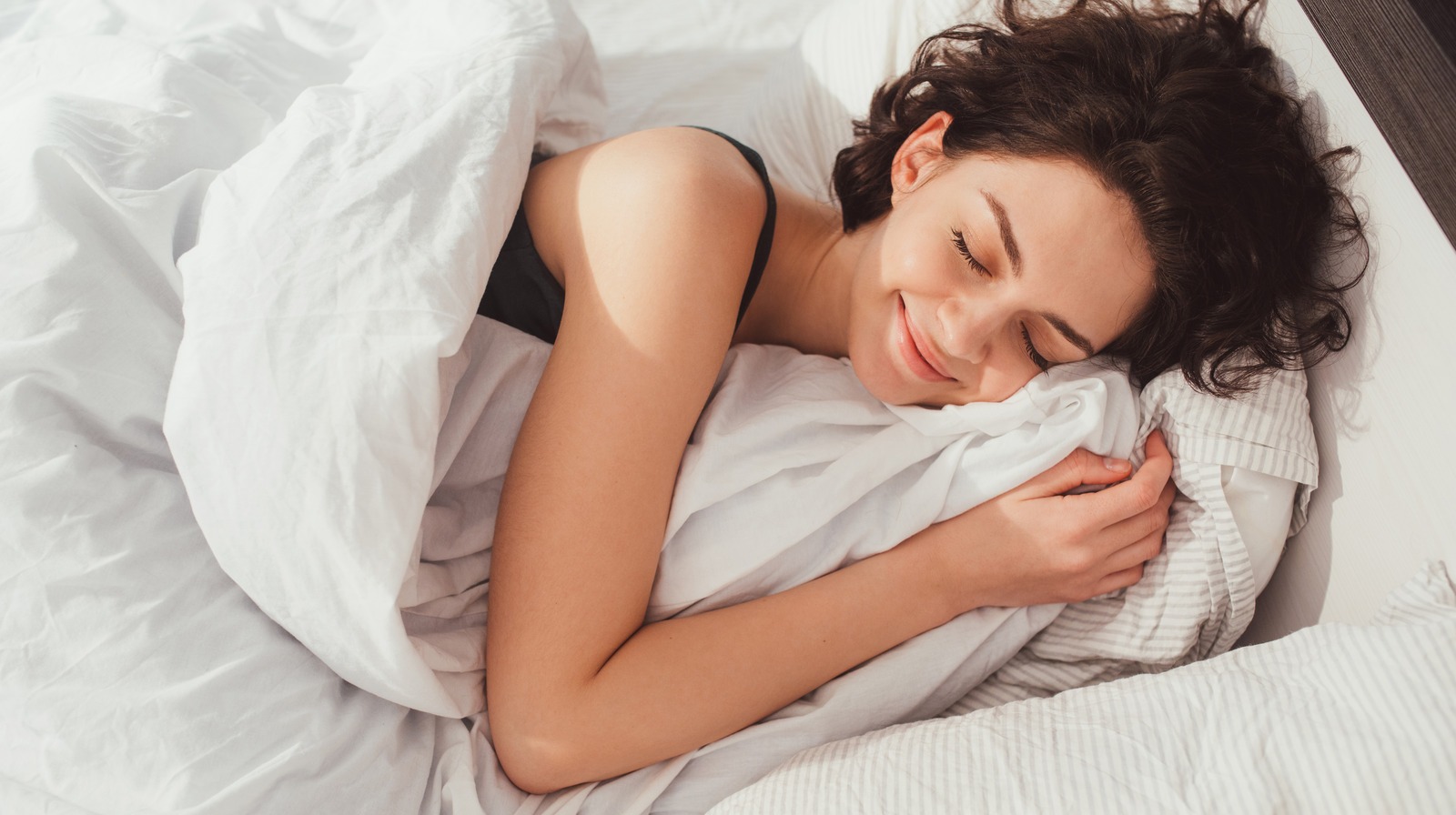
Most of us have a go-to sleeping position—but what if the way you sleep is quietly influencing your health?
While side sleeping is already popular, lying specifically on your left side may provide unexpected perks. From aiding digestion to easing back discomfort, this simple shift in posture might be the wellness upgrade you never considered.
The Unexpected Benefits of Sleeping on Your Left Side
Relieves Back Pain
Sleeping on your stomach often strains the spine. Side sleeping, however, helps keep the spine aligned—especially in the lower back—reducing stiffness and aches when you wake up.
Decreases Snoring
Snoring is more common when lying flat on your back since the tongue and soft palate can slide backward and obstruct the airway. Side sleeping, particularly on the left side, helps keep the airway open and may lessen snoring, making it especially helpful for people with sleep apnea.

Supports Digestion
Because the stomach is positioned on the left side of the body, lying there allows gravity to assist in moving food through the digestive system. This position can ease bloating, constipation, and even heartburn.
Boosts Brain Health
Early studies suggest that sleeping on your side may help the brain clear waste more effectively through the glymphatic system. This process could potentially lower the risk of conditions such as Parkinson’s and Alzheimer’s—though more human research is still needed.
Encourages Circulation During Pregnancy
For expectant mothers, lying on the left side promotes better blood flow to the placenta while reducing pressure on the liver and major veins. This helps ensure both mother and baby receive proper circulation.
How to Train Yourself to Sleep on Your Side
• If you naturally roll onto your back, a few tricks may help you adjust:
• Choose a supportive pillow that fits your neck and shoulders.
• Opt for a slightly softer mattress to cushion your hips and shoulders.
• Place a pillow between your knees to align the hips and another to hug for extra support.
• Try using a body pillow to stabilize posture.
• Sew a tennis ball onto the back of your sleep shirt to discourage rolling over.
• Sleep on the couch temporarily—the narrow space encourages side sleeping.
Potential Downsides of Side Sleeping (And How to Solve Them)
Side sleeping isn’t perfect for everyone, particularly if your pillow or mattress doesn’t provide the right support.
Shoulder and hip pressure: A mattress that’s too firm increases discomfort, while one that’s too soft disrupts spinal alignment.
Facial pressure: Lying on your side can worsen sinus pressure, jaw tightness, or glaucoma.
Fixes: Adjust pillow firmness, switch sides during the night, and select a mattress that balances comfort with support.

Other Sleeping Positions: Pros and Cons
Back Sleeping
Pros: Can ease arthritis, hip and knee pain, bursitis, and reduce sinus congestion.
Tips: Place a pillow under the knees, keep arms and legs slightly apart to reduce joint pressure, and elevate the head to ease acid reflux or headaches.
Stomach Sleeping
Experts usually advise against this position because of spinal strain. Still, if it’s your preferred way to sleep:
• Use a thin pillow or none at all.
• Avoid placing arms under the head.
• Switch head sides regularly.
• Keep legs straight to prevent twisting the spine.
Final Thoughts
There’s no universal “best” sleeping position—it’s about comfort and what works for your body. If your sleep is restful and pain-free, stick with what you know. But if you’re dealing with discomfort, poor digestion, or restless nights, trying the left side could be the small shift that makes a noticeable difference.
Listen to your body, adjust where needed, and aim to sleep smarter.